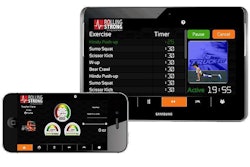
Central to any strategy to speed cash flow is to get invoices quickly in the hands of customers after loads are delivered to reduce the days sales outstanding (DSO).
DSO is largely a measure of how fast and accurately information and documents flow through the office. Motor carriers and freight brokers can use a number of business automation systems to decrease DSO and accelerate cash flow.
About four years ago, Las Cruces, N.M.-based Mesilla Valley Transport was looking to replace a “really rigid” document imaging system that it used to manage the flow of proof-of-delivery receipts and other paper documents in its billing process.
As the company grew, it needed to change its business processes to be more efficient but “when we wanted to make a modification in the system we had to start from the ground up,” says Mike Kelley, chief information officer. MVT now operates 1,300 trucks.
“We all have a special way to do things,” Kelley says. For example, its billing workflow is organized alphabetically by customer “bill-to” code. One billing clerk is put in charge of customers from A to H; another clerk invoiced customers from I to P, etc.
Its previous document imaging system presented images of documents, like signed proof-of-delivery receipts, to billing clerks in their separate workflow queues. The clerks would compare the receipts to orders in the transportation management software. They did this to ensure the information and documentation matched customer-specific billing requirements.
This process was time consuming, especially when information they needed to complete an invoice was not available. “The lack of integration between the two systems meant touching every document multiple times,” he says.
 Business systems can bring together documents and data needed to speed the order-to-cash cycle.
Business systems can bring together documents and data needed to speed the order-to-cash cycle.Exceptions at any point in the process stalled the billing process and increased DSO.
After research, MVT chose the SHIPS business process automation platform from EBE Technologies. MVT has been using the SHIPS technology for the past 3.5 years, Kelley says.
The company is now able to quickly make adjustments to its workflow using the software’s drag-and-drop visual tools and has configured the system to automatically detect any exception in the billing workflow.
The SHIPS system presents information to billing clerks only when orders are ready to bill. The exceptions in orders are routed to the right person, or department, to correct before they show up in the billing workflow queue.
“Billers no longer have to touch every document every day. The amount of work evaporated,” Kelley says.
Overall, the new system improvements made it possible for MVT to decrease its DSO from an average of four days to 2.5 days. The difference of 1.5 days freed up more than $1 million in cash flow, he says.
Linking up with shipper portals
A growing number of shippers and third party logistics firms require carriers to submit invoices through their custom web portals. This trend started in the energy sector and is becoming more common among shippers of other commodities.
Notable shippers and third party logistics providers that require carriers to submit invoices through web portals include Walmart and Transplace. Many freight payment companies that shippers use, such as Cass, have portals too, says Brian Lavelle, a regional sales manager for software developer TMW Systems.
For carriers and logistics providers, the manual work to enter data and images to a website can negate efficiencies they have gained with their back-office technologies.
TMW Systems, in partnership with Amalto Technologies, recently developed a product called TMW CashLink that can automate the communication with these shipper portals.
With CashLink, carriers and freight brokers using the TMWSuite transportation management system are notified if any information is missing on an invoice before it is finalized, he says. When an invoice is finished, CashLink automatically submits the invoices to shipper portals through web services configured specifically for each customer, Lavelle explains.
CashLink sends back instant notifications to TMWSuite that invoices have been approved by the shipper, he says.
The return on investment comes from reducing the manpower to enter data and eliminating errors that would otherwise delay payment. The product is offered as a monthly subscription based on the number of customer portals a user has, he says.
Stay tuned for part 3 of this series that explores tools to eliminate errors in the billing process that can otherwise cause delayed payments.











